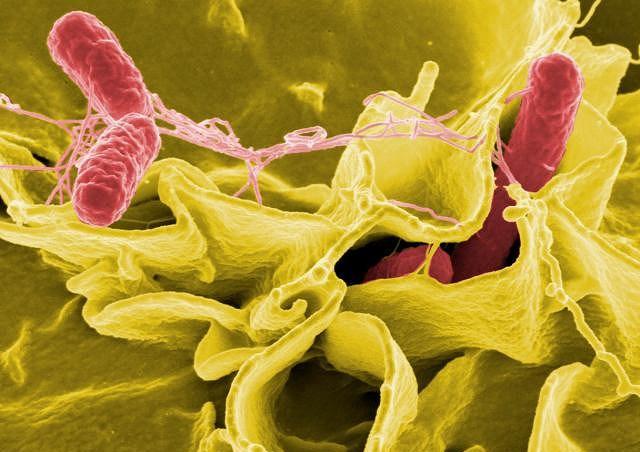The latest surveillance report from the Centers for Disease Control and Prevention (CDC) on antibiotic resistance in foodborne pathogens shows that multidrug resistance in Salmonella bacteria continues to remain low overall. But the authors of the report also note that multidrug resistance in a common Salmonella serotype is growing.
The findings are from the National Antimicrobial Resistance Monitoring System (NARMS) Human Isolates Surveillance Report. NARMS, a partnership between the CDC, the US Food and Drug Administration, the US Department of Agriculture, and state and local health departments, tracks antibiotic resistance in Salmonella and other potentially harmful intestinal bacteria—such as Escherichia coli O157, Shigella, and Campylobacter—transmitted commonly through food.
The annual report is considered an essential tool in tracking resistance trends.
Resistance triples in one Salmonella strain
To determine those trends, NARMS compared the prevalence of antibiotic resistance found in human isolates in 2014 with the average prevalence of the two previous 5-year periods: 2004 through 2008 and 2009 through 2013.
Among the encouraging findings was that multidrug resistance in Salmonella was 9.3%, just slightly higher than the 9% average recorded from 2009-2013 but down from 11% in the 2004-2008 period. Resistance to ceftriaxone—a third-generation cephalosporin used to treat severe Salmonella infections—dropped to 2% from 3%. In addition, there was no observed decrease in susceptibility in Salmonella to both azithromycin and ciproflaxin.
But the report also found that multidrug resistance in Salmonella seroptype I 4,[5],12:i:-, which has been linked to animal exposure or eating pork or beef, climbed from 18% in 2011 to 43% in 2014. Decreased susceptibility to ciproflaxin in Salmonella was also up, rising from 3% in 2013 to 4% in 2014. In the type of Salmonella that can cause typhoid fever (S typhi), levels of resistance to ciproflaxin jumped from 68% in 2013 to 74% in 2014.
In addition, the NARMS report noted increasing resistance in Campylobacter and Shigella strains to fluoroquinolone and quinolone antibiotics.
The CDC said the latest NARMS report is noteworthy because it's the first time the surveillance report has used whole-genome sequencing data of bacteria from people with antibiotic-resistant Salmonella infections. Whole-genome sequencing enables public health officials to rapidly detect resistance genes in bacteria and track resistance patterns more effectively.
The CDC estimates that Salmonella causes 1 million foodborne illnesses each year in the United States, with 19,000 hospitalizations and 380 deaths.
See also:
Aug 29 NARMS 2014 Human Isolates Surveillance Report
Aug 29 CDC news release























